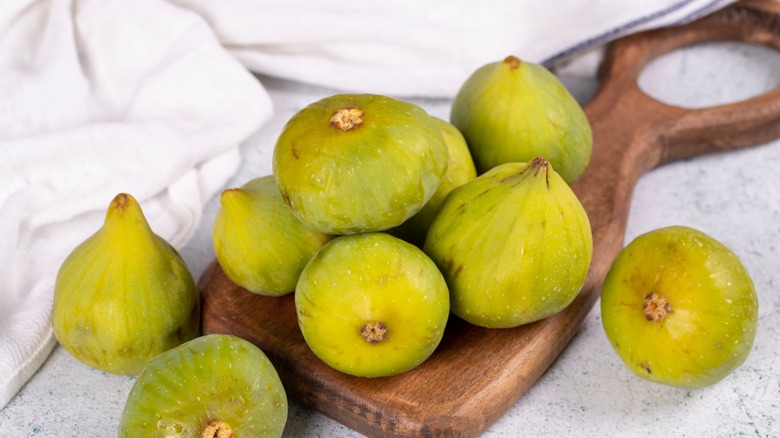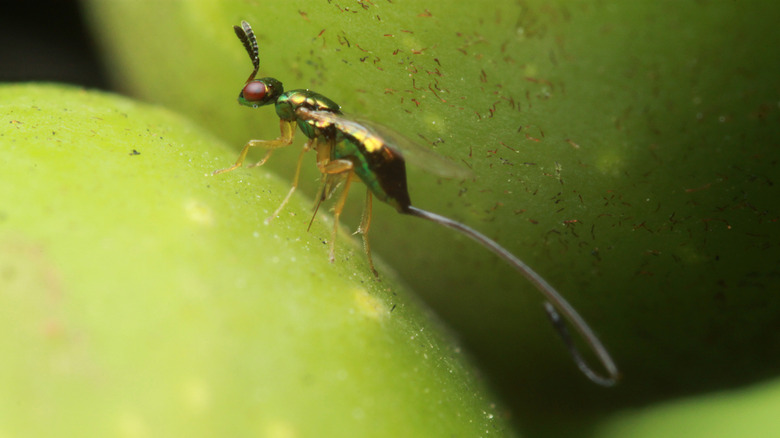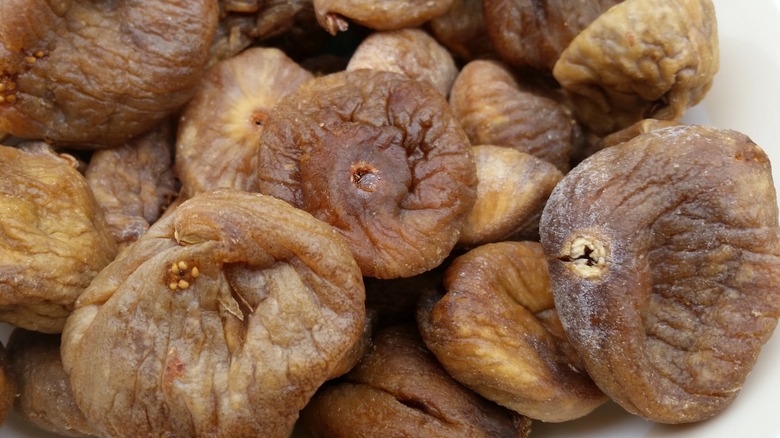What Makes Calimyrna Figs So Unique
Calimyrna figs are golden, plump, ornament-like fruits sold year-round in most grocery stores. Holidays will find them packaged in rings, stacked in well-balanced pyramids along with whole nuts, fruit baskets, and a myriad of delectable delights.
Calimyrna figs are usually sold in their dried form since they are easily perishable. When fresh, they have a light-green smooth skin but turn golden brown when dried, explains Organic Facts. But, these figs are truly special for a very surprising reason. Originating from Smyrna Turkey in the 1900s from leaf cuttings Cooks Illustrated explains, the Calimyrna is a name combination of California and Smyrna. So, they are essentially the same as Turkish figs.
Another type of fig common to the states is the Black Mission Fig. Both are sweet, have the crunch of seeds, and can be used interchangeably in recipes. Calimyrna figs have a sugary, crystalline coating on the outside and have been described as having a more powerful flavor than the Black Mission Fig, describes Cooks Illustrated. What makes the Calimyrna fig stand out from all other fig varieties? Well, that would be the biological mystery of wasp pollination.
Tiny Fig wasps pollinate Calimyrna figs.
The anatomy of a fig is unlike most fruits. It's actually a flower blooming on the inside or an "inverted flower" according to Bon Appetít. Figs like Mission are self-pollinating but the Calimyrna fig needs the assistance of a 2mm fig wasp that burrows her way into a fig and lays eggs into the short flowers of "male" figs (also known as caprifigs). In a condensed science lesson, the hatched wasps crawl out and fly to other figs either pollinating it for human consumption or laying their eggs for future wasps to grow. The "female" fig is what gets pollinated as the wasp crawls in spreading pollen from the last fig she crawled out of. And this is the fig we eat.
It's truly fascinating. Fig cultivars didn't discover wasp pollination occurring until the 1800s, says Armstrong, an educational site. California growers ensure that their fig crops continue to grow by encouraging wasp pollination. They "trick" the wasps into pollinating by hanging bags of fruit off of the Calimyrna tree limbs that are filled with the in-edible caprifigs and a few fig wasps, describes Environmental New Network.
The Calimyrna fig is truly unique.
Inevitably the question arises, "Am I eating wasps?!" The answer is "sort of". Because the "female" fig's interior flowers are too long to lay eggs in, no wasp larva are hatching or dying inside there. Occasionally one wasp after flying from fig to fig attempting to lay eggs may perish inside a fig but the fig enzymes quickly dissolve it so that by the time you are taking a tasty bite no wasp remains, Bon Appetít explains.
So, those crunchy, stick-in-your-teeth seeds are truly just that: seeds. Aptive explains that while many plants and crops rely on pollination to grow, the Calimyrna fig is one of the very few that is pollinated by wasps which is what makes these figs so special. Thanks to this symbiotic relationship, Calimyrna figs are nutritious, tout impressive health benefits, and have been adapted into a variety of skin care according to Organic Facts, but are also temptingly delicious.


